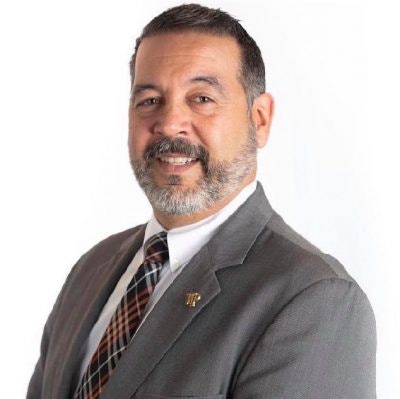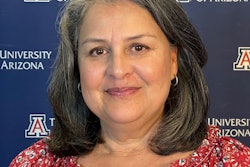 Francisco Díaz
Francisco DíazRecent changes and disruptions to teaching and learning at our university related to the pandemic were preceded by a demographic shift in our student body resulting in our University becoming both a Hispanic Serving Institution (HSI) and Minority Serving Institution (MSI) in 2015. Servicing approximately 10,000 students in Northern New Jersey, William Paterson University has a student population comprised of 60% Black, Indigenous, People of Color (BIPOC), a composition which consists of students who self-identify as 35% Latinx, 19% Black, and 6% Asian.
The shift in our student population revealed structural and pedagogical concerns that led to the development of several task forces aimed at addressing and understanding how to better serve our increasingly diverse student population. Among them was the HSI task force, who among others, received charges by our University President, Richard Helldobler, asking us to recommend ways and strategies that our higher education institution could move beyond being a Hispanic enrolling institution towards becoming a Hispanic Serving one.
Forming an intentional group to address equity
Our HSI task force, which consisted of three faculty, and four staff, one who is an A.V.P., and two student representatives, all who identify as Latinx and bilingual, represented a variety of lived experiences, from a variety of countries including: Colombia, Cuba, Dominican Republic, Puerto Rico, Peru and the United States. Together, we took up the charge of understanding the Latinx student experience and making recommendations for institutional change. Our shared Latinx backgrounds as a task force placed us in a unique position to take up our charge and marked a shift in our university’s structural approach towards institutional improvement—the intentional grouping of Latinx faculty and staff to address issues of equity for Latinx students.
The need for our task force was significant as we understood that Latinx students had been historically underserved on our campus, and nationwide, and as a result were underperforming as evidenced by key university indicators such as 4- and 6-year graduation rates and retention rates year to year. We had recently become aware that Latinx and Black students on our campus experienced disparate outcomes, as institutional data analysis highlighted these demographic disparities. The combined trajectory of increased diverse enrollment coupled with the understanding that BIPOC students experienced unequal outcomes compared to white peers, painted a bleak picture for our future enrollments unless we were able to effectively change course.
 Dr. David Fuentes
Dr. David FuentesWorking as an intentional group to better understand the Latinx student experience
The HSI task force worked to understand the Latinx student experience by hosting focus groups. Open calls were made to the Latinx student community with just over 3,000 invitations sent. We hosted several focus groups ranging in size from 8-12 and repeated across forums in each of our five colleges, in the residence halls, and with several Greek life student groups. We also surveyed the entire Latinx student population with questions aimed at eliciting how and why they persisted at WP. Through our focus group interactions with the students a few central themes arose: the importance of representation, what it meant for students to see faculty and staff that looked like them, how it increased their self-efficacy and sense of belonging to meet as a group, and how for many, they never knew so many Latinx ‘faculty’ worked at their university [as an aside, our Latinx students referred to all university employees as faculty]. This sentiment was true for us, the Latinx ‘faculty,’ as well, as few of us had previously been asked to work across units and university silos, certainly not as a group of Latinx faculty and staff. The intentional selection of Latinx faculty and staff to form a task force to understand how to better support Latinx students, marked an important shift from institutional prior practice and represents an important structural consideration to better serve Latinx communities.
The dialogic impact of working as an intentional group—Café Con Leche
Just as our Latinx students expressed high levels of affect and engagement as reported by their increased sense of belonging when interacting with Latinx ‘faculty,’ so too did we as ‘faculty’ experience mutual benefits and gains from working as a Latinx community. We quickly realized that one of the most important structural changes needed for our Latinx community, and by default our university, was to support increased opportunities for affinity groups and intentional group gatherings encouraging students, and ‘faculty’ to create communities—communities that we believed could lead to increased student outcomes. One such community that the HSI task force imagined could help build the kind of dialogic, mutually beneficial community for students, staff and faculty to grow, was called Café Con Leche, a university wide support network of Latinx faculty, staff, and students who host weekly gatherings.
Programmatic touching and creating support before its needed—Café Con Leche
Café con Leche, virtual and physical meetings hosted by Latinx staff and faculty, are weekly themed gatherings that are often responsive to students’ needs. The entire campus community is invited to celebrate Latinx culture and heritage. The atmosphere is vibrant, conversation is lively, hands are moving, smiles abound, the room is filled with positive affect and Latinx flare. It is a safe space for many, particularly those in our community who have ties and experiences within Latinx communities and those who like good coffee. Students come and go at their own pace, many of the same faces arrive week after week, some new faces come each week; sometimes students have specific inquiries, trials and tribulations to share, and other times they are just looking for a break and smiling face. For many Latinx students, Café Con Leche reminds them of home!
Café con Leche serves as a key university touch point for many of our Latinx students. It has been designed as one-stop-shop for students where we developed a network of Latinx ‘faculty’ known as Madrinas y Padrinos (godmother and godfather) who are able to either answer student inquiries directly or facilitate a connection with someone else who can, generally providing the kind of university navigation strategies that many Latinx, first-generation college students may benefit from having in a structured way. The design of the program has sought to invite directors, associate directors or members of the offices where student services reside. The goal was to close the gap between the services the university offers and with the real-time needs of students. By bringing the offices to the students, we realized that we could avail our services to students in ways that resonated better with them culturally, and affectively. This need and desire to match students’ needs with university support services was never more evident than during the beginning of the pandemic as many of our students experienced hardships consistent with living and learning at Covid Ground Zero. During the height of the pandemic in our region, we realized that Café Con Leche served a very important role, a role that our traditional student services were less capable of meeting as our remote learning transition thrust many of our services into a spiral and left some students in need. Café Con Leche, created prior to the pandemic, maintained its ties with students and became even more central in supporting students during this time of crisis.
Campus-wide Transformation
Since our University President charged the HSI task force with its work, several changes have contributed to our overall transformation. The hiring of our first Chief Diversity officer and the establishment of the Center for Diversity and Inclusion, the Black Cultural Center, and the soon to be center currently referred to as the Center for Latinidad, each marked important steps in establishing the kind of structural and institutional support needed to continue improving ourselves. These steps along with the recommendations of our task forces marked the beginning of our ongoing transformation—one that is defined by our desire to move beyond simply enrolling Hispanic students and becoming a Hispanic Serving Institution.
David Fuentes is an associate professor in the Department of Teacher Education: Prek-12 at William Paterson University.
Francisco Díaz is associate vice president of Campus Life and Co-Coordinator of Café con Leche at William Paterson University.
Maribel Rodriguez is associate director of Campus Activities and Co-Coordinator of Café con Leche at William Paterson University.
Elena Sabogal is an associate professor in the Department of Community & Social Justice Studies at William Paterson University.
Daisy Rodriguez is associate director of the Counseling Health & Wellness Center at William Paterson University
Johanna Torres is the director of Enrollment Services at William Paterson University.















